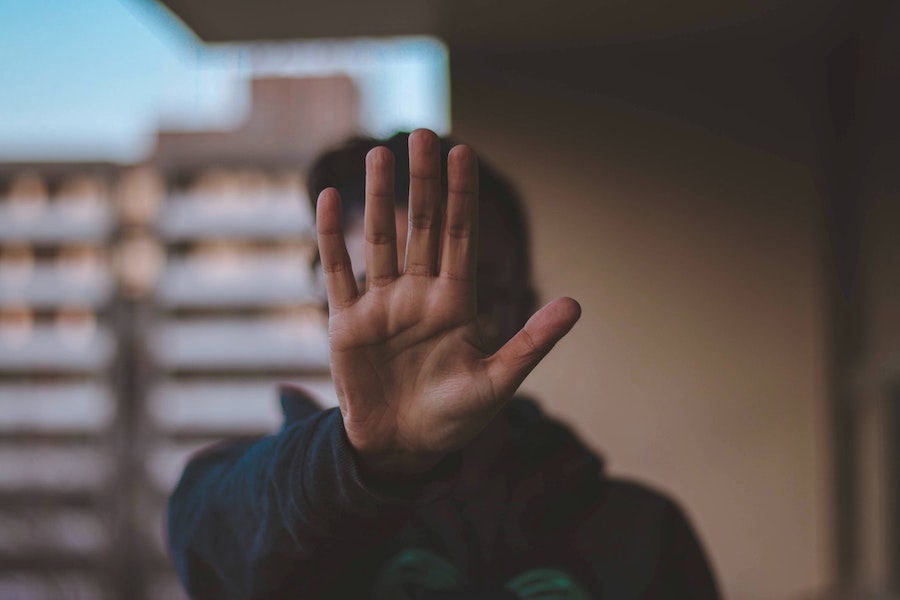Psychologists call for a comprehensive approach with real-world impact.

As the list of high-profile men accused of sexual harassment or assault grows, a cultural shift demanding increased accountability for workplace sexual harassment may be occurring in the public eye. But behind closed doors, many companies and institutions have done little to address sexual harassment, which has contributed to hostile work environments not only for victims of sexual harassment but also for other employees who are merely bystanders.
Sexual harassment is a pervasive problem with a devastating toll on employee well-being and performance, according to psychologists who study workplace harassment or provide consultation to companies on how to prevent it. There also is a dearth of research identifying which training programs may help reduce sexual harassment, while some ineffective training may even exacerbate the problem. Companies often still have a problematic knee-jerk reaction to sexual harassment complaints, says C. Brady Wilson, PhD, a psychologist in Scottsdale, Arizona, who specializes in sexual harassment and workplace trauma.
“There is a pattern to close ranks, admit nothing and blame the victim,” Wilson says. “Some companies hate the EEOC and hate their own human resources department. They just see sexual harassment complaints as something that slows them down and as an unnecessary expense. There is such a reluctance to cooperate and participate.”
In the 2015 fiscal year, the U.S. Equal Employment Opportunity Commission (EEOC) received approximately 28,000 charges alleging harassment or discrimination from employees working for private employers or state or local governments. Almost half of those complaints were based on gender, exceeding race (34 percent) or disability (19 percent). The EEOC estimates that less than 14 percent of individuals experiencing harassment ever file a formal complaint.
Sixty percent of American women voters said they have experienced sexual harassment, according to a recent Quinnipiac University poll. Almost 70 percent of the women who experienced harassment said it occurred at work, more than any other setting. And the poll found almost 90 percent of both male and female voters believe sexual harassment of women is a serious problem.
The current media spotlight on sexual harassment may motivate more companies to adopt sexual harassment training programs, but some efforts aren’t successful in changing attitudes or reducing sexual harassment. Conducting a one-time training for new employees is ineffective and is usually just window dressing by companies seeking protection from lawsuits, says Columbia University psychology professor Elissa Perry, PhD, who has researched sexual harassment training programs.
“It’s not just about providing one training and you’re done. It’s got to be a comprehensive approach,” she says. “The tone is set at the top. Are they just checking a box? If they are only doing it for legal reasons, then they don’t care if it works.”
Decades of research has documented the extensive damage suffered by victims of sexual harassment, including anxiety, depression, eating disorders, drug and alcohol abuse, job turnover and post-traumatic stress.
“Sexual harassment is really not about sex. It’s about power and aggression and manipulation. It’s an abuse of power problem,” says James Campbell Quick, PhD, a professor of leadership and management at the University of Texas at Arlington.
Quick has researched sexual harassment for more than two decades and co-authored a recent article in APA’s Journal of Occupational Health Psychology that examined advances in research and the changing dynamics of sexual harassment. More men now are reporting sexual harassment, and more research is needed in the lesbian, gay, bisexual and transgender communities. In the Quinnipiac University national poll, one in five male voters reported that he had experienced sexual harassment. Women also can be aggressors against other women or men, although that is less common, Quick says.
The quest for effective training
While there has been little research evaluating the effectiveness of sexual harassment training programs, there are some best practices that have been identified. Employees should learn about company policies and laws relating to sexual harassment, procedures for filing complaints, and expectations of behavior for all employees, says Chris Kilmartin, PhD, a psychologist and emeritus psychology professor at the University of Mary Washington.
Bystander intervention training also may help increase a sense of accountability, where employees are expected to speak up and even file their own complaints when they witness sexual harassment involving another employee. A toxic work environment can lower productivity and increase turnover and absenteeism, with employees less engaged in their work.
“A hostile environment affects the whole organization, not just the people who are harassed,” Kilmartin says. “Basically, it poisons the organization.”
Kilmartin has served as a sexual harassment training consultant for many organizations and the armed forces, including the U.S. Army, Air Force and Naval Academy. Training can be engaging, with real-life scenarios, rather than forcing employees to watch a dated video with stilted vignettes. Kilmartin used his chops as a stand-up comedian to incorporate humor into a sexual harassment training video he wrote for the Army. In the video, a clueless soldier is dressed down by a sergeant for telling sexist jokes.
Companies should use sexual harassment training programs that include pre-training, training and post-training components at the individual and group levels, Perry says. An anonymous employee survey or audit of the workplace before the training can be useful in identifying the extent of sexual harassment. The training should be interactive, with multiple training methods, including lectures, videos and role-playing. Follow-up after the initial training should include knowledge assessment tests and annual refresher training courses.
A successful training program might result in an increase in sexual harassment complaints in the short term as more employees feel empowered to report misconduct, but an elevated level of complaints for an extended period may indicate the training hasn’t helped, Perry says.
Some ineffective training programs may even backfire and increase negative views or stereotypes, according to research. A study of a 30-minute training found that men who completed the program were more likely to say that sexual behavior at work was wrong, but they also were more likely to believe that both parties contribute to inappropriate sexual behavior. They also were less likely to view coercion of a subordinate as sexual harassment than were men or women who didn’t take the training.
The role of workplace culture
Some common risk factors for sexual harassment include workplaces with a strict hierarchical power dynamic where men outnumber women and most supervisors are male. Hiring more women in leadership positions and creating a civil, respectful culture for all employees can help curb the problem, Kilmartin says.
A persistant climate of sexual harassment is also linked to increased likelihood of sexual assault. According to a 2015 Department of Defense study, military women who had experienced a sexual assault in the past year were about 14 times more likely to indicate they had previously experienced sexual harassment. Men who reported sexual assault were about 49 times more likely to indicate they had suffered sexual harassment than other male soldiers. It is estimated that more than 80 percent of military men who experience sexual harassment never report it.
The Defense Department has instituted a comprehensive training strategy to reduce sexual assault and harassment, including an anonymous help line, surveys of armed forces members, focus groups and procedures for reducing retaliation against victims.
In both the military and civilian worlds, sexual harassment complaints are sometimes dismissed as a “he said, she said” situation, says Quick, who co-wrote a forthcoming book on campus sexual assault. Companies need to have clear policies that sexual harassment won’t be tolerated and that perpetrators will be punished, but the process needs to be fair to all parties. “You can’t use a sledgehammer. Some people do some things unintentionally,” Quick says. “You have to look at intentions and actions. It’s a deliberative process you have to go through.”
A harsh zero-tolerance policy toward sexual harassment also can backfire, where alleged perpetrators don’t feel the process is fair and victims fear making a complaint because they may not want the perpetrator to be fired, Quick says. “Everyone potentially has a defense, so you have to listen to both sides of the conflict,” he says.
More research is needed to identify personality traits that may contribute to sexual harassment. One study published last year in Personality and Individual Differences found a positive association between sexual harassment proclivity and the “dark triad” personality traits (narcissism, psychopathy and Machiavellianism). While some people view sexist jokes as harmless, another study published in 2015 in the International Journal of Humor Research found that telling sexist jokes was associated with self-reported rape proclivity and blaming of victims.
The fate of harassment targets
One worrying trend is the increase in companies buying liability insurance to defend against sexual harassment lawsuits, because companies may treat sexual harassment as a cost of doing business rather than addressing it, Wilson says. “The fact is it’s going to cost the company more to do the training and compliance than buying insurance. That’s a hard reality,” he says.
Wilson has trained EEOC staff about the differing ways that targets may respond to sexual harassment. Some women may try to avoid an aggressor or make weak pleadings for him to stop. They may downplay the misconduct and endure it for a long time before ultimately filing a complaint. Companies then may use those delays as ammunition against victims to question why they didn’t file a complaint sooner or allege that the victims didn’t really object to the inappropriate behavior, Wilson says. More than 70 percent of EEOC sexual harassment charges filed during the last two fiscal years included charges of retaliation, according to unpublished EEOC data obtained by the Center for American Progress.
Targets who face retaliation usually aren’t fired outright, but their lives in the workplace are made so difficult that they eventually quit, says Wilson, a former president of the Arizona Psychological Association. He had one client whose desk was moved into a hallway outside her office and who had her computer and phone taken away after she filed a sexual harassment complaint.
That retaliation doesn’t go unnoticed, and fellow workers often distance themselves from the target rather than helping. “Rarely do people stand up for them,” Wilson says. “They don’t want to get caught in that web or suffer retaliation themselves.”
Bystander intervention training can help reverse that trend by training employees to be responsible for maintaining a safe office environment, even if it means getting involved in a situation they would rather avoid, Wilson says.
On another front, some large companies are compelling their suppliers to take action on sexual harassment, which can be a powerful tool because it affects those businesses’ bottom line. McDonald’s, Walmart, Trader Joe’s, Whole Foods, Burger King and other companies have begun buying fruits and vegetables only from growers who abide by a human rights code of conduct to protect farmworkers called the Fair Food Program, which was developed by the Coalition of Immokalee Workers in Florida.
While high-profile men in politics, entertainment and the media are dominating the news coverage over allegations of sexual harassment, industries with large numbers of female low-wage workers have much higher rates of sexual harassment that go unnoticed with little public outcry. From 2005 to 2015, more than 41,000 charges of sexual harassment were filed with the EEOC, with the hotel and food industries recording the most charges (14 percent), followed closely by the retail industry (13 percent). The media and entertainment industries each accounted for less than 3 percent of sexual harassment complaints.
Shifts in cultural attitudes toward sexual harassment may ultimately be the most valuable tool in combating sexual harassment by creating a shared sense of public responsibility and accountability. The #MeToo social media messages that went viral after the Harvey Weinstein sex scandal illustrated in stark detail how many women have experienced sexual harassment. Kilmartin says he had male friends on Facebook who acknowledged they had previously engaged in sexual harassment, but they promised to stop after reading the heartrending accounts that women shared publicly, often for the first time.
“It was powerful and personalized the issue that it’s not just something that happens in an evil Hollywood back room,” Kilmartin says. “It helps sensitize men to the stories of people they know so it wasn’t just an abstraction.”
Greater public awareness of sexual harassment and more proactive involvement by companies and other institutions hopefully will reduce the prevalence of sexual harassment and the devastation it causes, Quick says.
“It’s not just a woman’s problem. Women continue to be the primary victims of sexual harassment, and they are carrying the burden of suffering,” he says. “Until males own their responsibility in the problem, it’s going to be really tough to get a big movement in addressing it.”
This article originally appeared in Good Company, a newsletter from APA’s Center for Organizational Excellence, which works to enhance the functioning of individuals, groups, organizations and communities through the application of psychology to a broad range of workplace issues. To learn more about the center, go to www.apaexcellence.org.
Have we made any progress?
James Campbell Quick, PhD, and M. Ann McFadyen, PhD, seek to answer that question in the July issue of APA’s Journal of Occupational Health Psychology (Vol. 22, No. 3, 2017). Their article reviews the literature on sexual harassment and finds that while sexual harassment complaints have decreased by 28 percent since 1998, complaints by males have increased, and merit resolutions and monetary benefits have increased. The authors also point out that one persistent problem related to sexual harassment is a lack of agreement on its definition. dx.doi.org/10.1037/ocp0000054
Resources
APA’s Center for Organizational Excellence
Resources on preventing and addressing workplace sexual harassment, including statistics, reports, trainings, book recommendations and more, can be found at apaexcellence.org/sexual-harassment.



